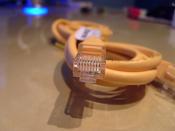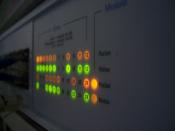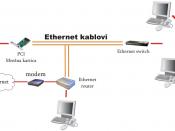The Ethernet protocol is a set of rules that administer the infrastructure so computers can communicate over a network. The rules act as guidelines that control the speed of the data transferred, access method, types of cables used, and physical topologies. Most Ethernet systems use Carrier sense multiple access with collision detection (CSMA/CD to control access to the network and frames for combining data into data packets, which is defined by the IEEE 802.3. The Ethernet protocol allows for linear bus, star, or tree topologies. The data can be transmitted over coaxial, twisted pair, wireless access points, or fiber optic cable at speeds of 10Mbps, 100Mbps, or 1Gbps. (McIlroy)The Frame Structure allows the Ethernet network to send information as discreet messages known as frames. The frame structure consists of seven different fields. The Preamble, which consists of seven bytes, is a binary code that informs the receiving side that a frame is coming and synchronizes the frame reception between the two stations.
The Start of frame delimiter, which is a one-byte code, is used to indicate the beginning of a frame. The Destination address, which consists of six bytes, is the address of the station that will receive the frame. The addresses used in 802.3 use 48 bit addresses where the first bit identifies if the address is an individual or group address; and the second bit identifies whether the address is globally or locally administered. The source address, which consists of 6 bytes, is used to identify the sending address. The length, consists of two bytes, identifies the value of the data in the Ethernet frame. The value can be anywhere from 0 to 1500. The data is the actual information being sent. If the data field is less than 46 bytes the pad field will compensate and extend...


